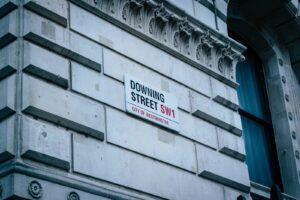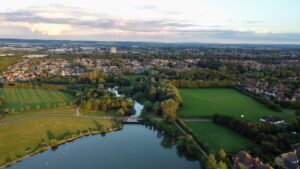Nichola Egan, an Air Quality Consultant at AECOM, writes that it’s up to transport planners to put forward solutions to improve air quality.
There are many contributory sources to air pollution, but transport is the big one. It is responsible for approximately half of the NOX emissions in the UK, Â and those emissions tend to be emitted close to where people live and work.
Road transport is the largest single source of NOX and the air close to busy roads is where we find the worst quality in the Country.
Road transport also produces PM pollution, which is from both the wear of brakes and tyres and produced as a side product of combustion in the engine. These two road-transport based sources make up 12 per cent of the smallest and most dangerous type of PM, PM2.5 (particles less than 2.5 micro-metres in diameter) which can enter the bloodstream via the lungs.
It is clear that to fight air pollution, we must focus on transport.
Following London’s Ultra Low Emission Zone, a form of CAZ, they have fast become the government’s intervention of choice to reduce urban air pollution.
23 local authorities are currently investigating whether a CAZ would help solve their air quality problems, and they are heavily reliant on detailed transport modelling to inform their decisions. Questions they need answering include:
- Where is the pivot point in cost to encourage drivers to replace polluting vehicles with greener ones rather than stumping up the cost to enter the CAZ in a heavy polluting vehicle?
- How many journeys might not be made at all if the CAZ was introduced? What effect would that have on businesses and people?
- How many journeys might instead be made by public transport? Can the public transport network handle them?
- How many motor vehicle journeys might divert around the outside of the zone (including parking just outside)? To what extent would that result in a shifting of the air quality problem to these peripheral areas?
- How many journeys might instead go to alternative locations–would people choose to shop elsewhere, for example? What effects (air quality and otherwise) might these new behaviours have?
If the answers to these questions prove undesirable, a CAZ might not be the silver bullet we are looking for on air quality.
A CAZ does not exist in isolation, and problems may be ‘solved’ in one area by shipping the problem to somewhere else (possibly under a different authority) — a real risk to watch for.
Matching up to the scale of the problem
It is important to stress that responsibility for problem and responsibility for its causes need to match-up. Responsibility for local air quality management is devolved down to local authority level, where ‘hot-spots’ of poor air quality–typically found around busy roads or congested urban junctions–are designated as Air Quality Management Areas and subject to action plans.
The problem with this is approach is that vehicles don’t appear out of nowhere at snarled-up interchanges. Busy roads are busy because people on them are going from A to B, neither of which are necessarily the same location as the air pollution problem.
Taking a strategic view, not delineated by local authority borders, we see that the problem ultimately stems from the travel choices people make along a transport route, a town, a city or a region.
As such, localised efforts — to redesign inefficient junctions, for instance — while well intentioned, are ultimately sticking plasters on a problem that we need to address at a more fundamental level: our dependence on motorised vehicles.
Going beyond electrification
Leeds.And so, inevitably, it’s time to talk modal shift. As an air quality consultant, I try to walk the walk as well as talk the talk. I don’t own a car. I get a bus or cycle to the train station, where I take a train to Leeds to work.
Like everyone else I know, I can moan about my commute for as long as you’ve got. What stands out to me, and where transport planning can have a huge impact today, and in the future, is which transport modes we make easy, and which we make more difficult.
Most people do not make their transport decisions to be environmentally sound (although environmental concerns are definitely rising up people’s priority list). They want to get where they’re going quickly, cheaply and reliably.
Every time I have to sprint for the train because the station is 400 metres (up a hill!) from my bus stop; every time I have to get off my bike to manoeuvre the last leg into the station; every time I have to stand, packed sardine-like on an overcrowded train — I’m reminded how much easier it could be if I just had a car. It does not have to be this way.
In fact, if we are serious about bringing air pollution down, it has to change.
Active Transport
Making active transport and public transport the methods of choice in cities and towns is not without precedent, but it does require big decisions to be made and money to be put behind them.
People in Amsterdam and Copenhagen cycle a lot, but not necessarily because they are more environmentally conscious than the UK. They cycle because it is simply the quickest way to get around; because the infrastructure is designed for them.
Although active travel infrastructure might seem expensive at first to some people, and can be controversial, making the first brave step can lead to self-sustaining virtuous circles.
A more pleasant roadside environment encourages walking and cycling. If more people choose to walk or cycle instead of drive, air pollution goes down. And with it comes more demand for active travel infrastructure.
When I imagine our future cities, I no longer want to see a contradiction between the cleaner choice and the easy choice. Transport planners will have a big say in making that a reality.
The reward is not just box ticking on air quality outcomes; it is the health and wellbeing of the people breathing the air and the ecosystems that rely on it.
This blog was produced as part of the Transport Planning Day campaign.
















Leave a Reply